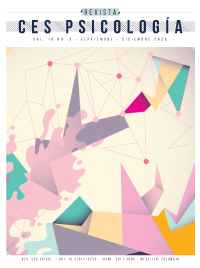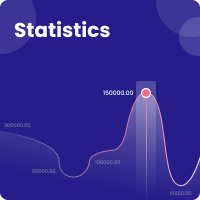Subjective perception of COVID-19: A comprehensive assessment measure for adolescents and young people
DOI:
https://doi.org/10.21615/cesp.6143Keywords:
COVID-19, adolescents, youth, assessment, psychometric properties, subjective perceptionAbstract
The COVID-19 pandemic is an adverse event and risk factor for the integral health of adolescents and young people, associated with stress disorders, anxiety, and depression; however, the ecological-transactional perspective supposed that the perception of the event or situation plays a central role in adaptation and mental health. Likewise, detecting risk-protective factors is the basis for effective intervention The purpose of this study was to develop a valid and reliable multidimensional measure to explore the perception and psychological responses of young people to the pandemic. An instrumental study was carried out and 727 adolescents aged 13 to 24 years (M= 18.36; SD= 2.9) from Mexico City participated. The COVID-19's Youth Perception Survey (COVID 19's YPS) was constructed which was applied online. A factor analysis using the principal components (n= 410) yielded a solution of eight factors: Fear and worries, Stress indicators, School pressures, Preventive behaviors, Changes in routine, Family dynamics, Relaxation and leisure, and Virtual socialization (EV= 59.07%). A confirmatory factor analysis using the maximum likelihood method (n= 317) corroborated an eight-factor model showing acceptable fit index, and it also shows a good internal consistency (α total= .863). These results suggest that the Survey is a valid and reliable measure that can be used to comprehensively assess adolescents and youth perception and responses to the pandemic, providing data to designing evidence-based intervention.
Downloads
References
Ahorsu, D. K., Lin, C. Y., Imani, V., Saffari, M., Griffiths, M. D., & Pakpour, A. H. (2020). The fear of COVID-19 scale: development and initial validation. International Journal of Mental Health and Addiction, 1-9. https://doi.org/10.1007/s11469-020-00270-8
Ato, M., López-García, J. J., & Benavente, A. (2013). Un sistema de clasificación de los diseños de investigación en psicología. Anales de Psicología/Annals of Psychology, 29(3), 1038-1059. http://dx.doi.org/10.6018/analesps.29.3.178511
Bazán, C., Brückner F., Giacomazzo, D., Gutiérrez, M., & Maffeo, F. (2020). Adolescentes, COVID-19 y aislamiento social, preventivo y obligatorio. FUSA. https://grupofusa.org/wp-content/uploads/2020/05/Adolescentes-COVID-19-y-aislamiento-social.pdf
Becker, S., & Gregory, A. (2020). Editorial Perspective: Perils and promise for child and adolescent sleep and associated psychopathology during the COVID-19 pandemic. Journal of Child Psychology and Psychiatry, 4-6. https://doi.org/10.1111/jcpp.13278
Bonanno, G. A., Brewin, C. R., Kaniasty, K., & La Greca, A. M. (2010). Weighing the costs of disaster: Consequences, risks, and resilience in individuals, families, and communities. Psychological Science in the Public Interest, 11(1), 1-49. https://doi.org/10.1177/1529100610387086
Buzzi, C., Tucci, M., Ciprandi, R., Brambilla, I., Caimmi, S., Ciprandi, G., & Marseglia, G. L. (2020). The psycho-social effects of COVID-19 on Italian adolescents’ attitudes and behaviors. Italian Journal of Pediatrics, 46(69), 1-7. https://doi.org/10.1186/s13052-020-00833-4
Byrne, B. M. (2016). Structural equation modeling with Amos. 3rd Edition. Taylor & Francis
Cao, W., Fang, Z., Hou, G., Han, M., Xu, X., Dong, J., & Zheng, J. (2020). The psychological impact of the COVID-19 epidemic on college students in China. Psychiatry Research, 287, 0165-1781. https://doi.org/10.1016/j.psychres.2020.112934
Çetin, M., & Kökalan, Ö. (2021). A multilevel analysis of the effects of indoor activities on psychological wellbeing during COVID-19 pandemic. Anales de Psicología/Annals of Psychology, 37(3), 500-507. https://doi.org/10.6018/analesps.446891
Comisión Nacional para la Protección de los Sujetos Humanos de Investigación Biomédica y del Comportamiento. (2010). Principios y guías éticos para la protección de los sujetos humanos de investigación. Informe Belmont. http://pcb.ub.edu/bioeticaidret/archivos/norm/InformeBelmont.pdf
Drury, J., Carter, H., Cocking, C., Ntontis, E., Tekin Guven, S., & Amlôt, R. (2019). Facilitating collective psychosocial resilience in the public in emergencies: Twelve recommendations based on the social identity approach. Front Public Health, 6(7), 1141-149. https://doi.org/10.3389/fpubh.2019.00141
Dyregrov A., Yule W., & Olff, M. (2018). Children and natural disasters. European Journal of Psycho-Traumatology, 9(2), 1-14. https://doi:10.1080/20008198.2018.1500823
Evans, S., Alkan, E., Bhangoo, J., Tenenbaum, H., & Ng-Knight, T. (2021). Effects of the COVID-19 lockdown on mental health, wellbeing, sleep, and alcohol use in a UK student sample. Psychiatry Research, 0165-1781. https://doi.org/10.1016/j.psychres.2021.113819
Ferrando, P., & Anguiano, C. (2010). El análisis factorial como técnica de investigación en psicología. Papeles del Psicólogo, 31(1), 18-33.
Gignac, G. E., & Szodorai, E. T. (2016). Effect size guidelines for individual differences researchers. Personality and Individual Differences, 102, 74-78. https://doi.org/10.1016/j.paid.2016.06.069
Golberstein, E., Wen, H., & Miller, B.F. (2020). Coronavirus disease 2019 (COVID-19) and mental health for children and adolescents. JAMA Pediatrics, 174(9), 819-820. http://doi.org/10.1001/jamapediatrics.2020.1456
Güner, R., Hasanoğlu, I., & Aktaş, F. (2020). COVID-19: Prevention and control measures in community. Turkish Journal of Medical Sciences, 50, 571–577. http://doi.org/10.3906/sag-2004-146
Hall, J. A., & Ochoa-Martínez, P. Y. (2020). Enseñanza virtual en educación física en primaria en México y la pandemia por COVID-19. Revista Ciencias de la Actividad Física, 21, 1-7. https://doi.org/10.29035/rcaf.21.2.4
Hernández, R. A. (2020). Covid-19 y América Latina y el Caribe: los efectos económicos diferenciales en la región. http://hdl.handle.net/10017/43143
IBM. (2017). Statistical Package for Social Sciences (SPSS) 25. Armonk, NY, USA: IBM Corporation.
Instituto Nacional de Estadística, Geografía e Informática [INEGI]. (2019). Encuesta Nacional sobre Disponibilidad y Uso de Tecnologías de la Información en los Hogares. https://www.inegi.org.mx/temas/ticshogares/default.html
Lazarus, R., & Folkman, S. (1991). Estrés y procesos cognitivos. Martínez Roca
Lee, J. (2020). Mental health effects of school closures during COVID-19. The Lancet Child & Adolescent Health, 4(6), 421. http://doi.org/10.1016/S2352-4642(20)30109-7
Lei, L., Huang, X., Zhang, S., Yang, J., Yang, L., & Xu, M. (2020). Comparison of prevalence and associated factors of anxiety and depression among people affected by versus people unaffected by quarantine during the COVID-19 epidemic in southwestern China. Medical Science Monitor, 12(1), 1-17. http://doi.org/10.12659/MSM.924609
Liu, X., Luo, W.T., Li, Y., Li, C.N., Hong, Z.S., Chen, H.L., … Xia J.Y. (2020). Psychological status and behavior changes of the public during the COVID-19 epidemic in China, Infectous Disease of Poverty, 9(58), 1-19. http://doi.org/10.1186/s40249-020-00678-3
Lloret-Segura, S., Ferreres-Traver, A., Hernández-Baeza, A., & Tomás-Marco, I. (2014). El análisis factorial exploratorio de los ítems: una guía práctica, revisada y actualizada. Anales de Psicología/Annals of Psychology, 30(3), 1151-1169. http://dx.doi.org/10.6018/analesps.30.3.19936
Martínez, T. Y., Bernal, S., Mora, A., & Hun, N. (2020). Percepción subjetiva de manejo emocional, ansiedad y patrones de ingesta relacionados con aislamiento por COVID-19. Universitas Psychologica, 19, 1-9. https://doi.org/10.11144/Javeriana.upsy19.epbi
Medina-Valencia, R. T., Andrade-Sánchez, A. I., & Ramos-Carranza, I. G. (2020). La recreación en adolescentes mexicanos durante el confinamiento por Covid-19. Lecturas: Educación Física y Deportes, 25(271), 22-34. https://doi.org/10.46642/efd.v25i271.2549
Nunnally, J., & Bernstein, I. (1995). Teoría Psicométrica. McGraw-Hill.
Oosterhoff, B., Palmer, C. A., Wilson, J., & Shook, N. (2020). Adolescents’ motivations to engage in social distancing during the COVID-19 pandemic: Associations with mental and social health. Journal of Adolescent Health, 1-7. https://doi.org/10.1016/j.jadohealth.2020.05.004
Organización Panamericana de la Salud [OPS]. (2016). Protección de la salud mental y atención psicosocial en situaciones de epidemias. https://www.paho.org/disasters/index.php?option=com_docman&view=download&category_slug=informes-tecnicos&alias=2539-proteccion-salud-mental-atencion-psicosocial-situaciones-epidemias-2016-539&Itemid=1179&lang=es
Pan American Health Organization [PHO]. (2021). Plan of action for women’s, children’s, and adolescents’ health 2018-2030. https://iris.paho.org/handle/10665.2/49609
Reis, L. M., Pereira, C. J., de Assis Freire, S. E., & de Medeiros, É. D. (2020). Medidas desenvolvidas para avaliar os impactos psicológicos da pandemia de COVID-19: uma revisão sistemática da literatura. Salud & Sociedad, 11, e4565. http://doi.10.22199/issn.0718-7475-2020-0006
Schumacker, R. E., & Lomax, R. G. (2016). A beginner's guide to structural equation modeling. 4th Eth. New York: Taylor & Francis
Secretaría de Salud de México. (2020). Covid-19 México. https://coronavirus.gob.mx/datos/
Sharma, V., Ortiz, M. R., & Sharma, N. (2020). Risk and protective factors for adolescent and young adult mental health within the context of COVID-19: a perspective from Nepal. Journal of Adolescent Health, 67(1), 135-137. https://doi.org/10.1016/j.jadohealth.2020.04.006
Tang, S., Xiang, M., Cheung, T., & Xiang, Y. T. (2020). Mental health and its correlates among children and adolescents during COVID-19 school closure: The importance of parent-child discussion. Journal of Affective Disorders, 279, 353-360. http://doi.org/10.1016/j.jad.2020.10.016
The Lancet. (2020). Emerging understandings of 2019-nCoV [Editorial]. The Lancet, 395, 10221- 1031. https://doi.org/10.1016/S0140-6736(20)30186-0
Wang, Ch., Horby, P., Hayden, F., & Gaoh, G. (2020). A novel coronavirus outbreak of global health concern. Lancent, 395(10223), 470-473. http://doi.org/10.1016/S0140-6736(20)30185-9
Word Health Organization [WHO]. (2020). Statement on the second meeting of the International Health Regulations (2005), Emergency Committee regarding the outbreak of novel coronavirus (2019-nCoV). https://www.who.int/news-room/detail/30-01-2020-statement-on-the-second-meeting-of-the-international-health-regulations-(2005)-emergency-committee-regarding-the-outbreak-of-novel-coronavirus-(2019-ncov)
Xie, X., Xue, Q., Zhou, Y., Zhu, K., Liu, Q., Zhang, J., & Song, R. (2020). Mental health status among children in home confinement during the coronavirus disease 2019 outbreak in Hubei Province, China. JAMA Pediatrics, 174(9), 898-900. http://doi.org/10.1001/jamapediatrics.2020.1619
Zhong, B.L., Luo, W., Li, H.M., Zhang, Q.Q., Liu, X.G., Li, W.T., & Li, Y. (2020). Knowledge, attitudes, and practices towards COVID-19 among Chinese residents during the rapid rise period of the COVID-19 outbreak: a quick online cross-sectional survey. International Journal of Biological Sciences, 16(10). 1745–1752. http://doi.org/10.7150/ijbs.45221
Zhou, S.J., Wang, L.L., Yang, R., Yang, X.J., Zhang, L.G., Guo, Z.C., …Chen, J.X. (2020). Sleep problems among Chinese adolescents and young adults during the coronavirus-2019 pandemic. Sleep Medicine. https://doi.org/10.1016/j.sleh.2020.06.001
Zhou, S.J., Zhang, L., Wang, L., Guo, Z., Wang, J., Chen J., …Chen, J-X. (2020). Prevalence and socio-demographic correlates of psychological health problems in Chinese adolescents during the outbreak of COVID-19. European Child & Adolescent Psychiatry, 1-10. https://doi.org/10.1007/s00787-020-01541-4
Downloads
Published
How to Cite
Issue
Section
License
Copyright (c) 2022 Blanca Estela Barcelata-Eguiarte, Raquel Rodríguez-Alcántara

This work is licensed under a Creative Commons Attribution-NonCommercial-ShareAlike 4.0 International License.
Each manuscript is accompanied by a statement specifyingThat the materials are unpublished, that have not been previously published in printed formatElectronic and that they will not be presented to any other means before knowing the decision of the magazine. ThroughoutIn case, any previous publication, sea in printed or electronic form, must be made known to the editorial staffWriting The authors attach a signed statement stating that, and the manuscript is acceptedFor publication, the rights of reproduction are the exclusive property of the Journal CES Psychology.


